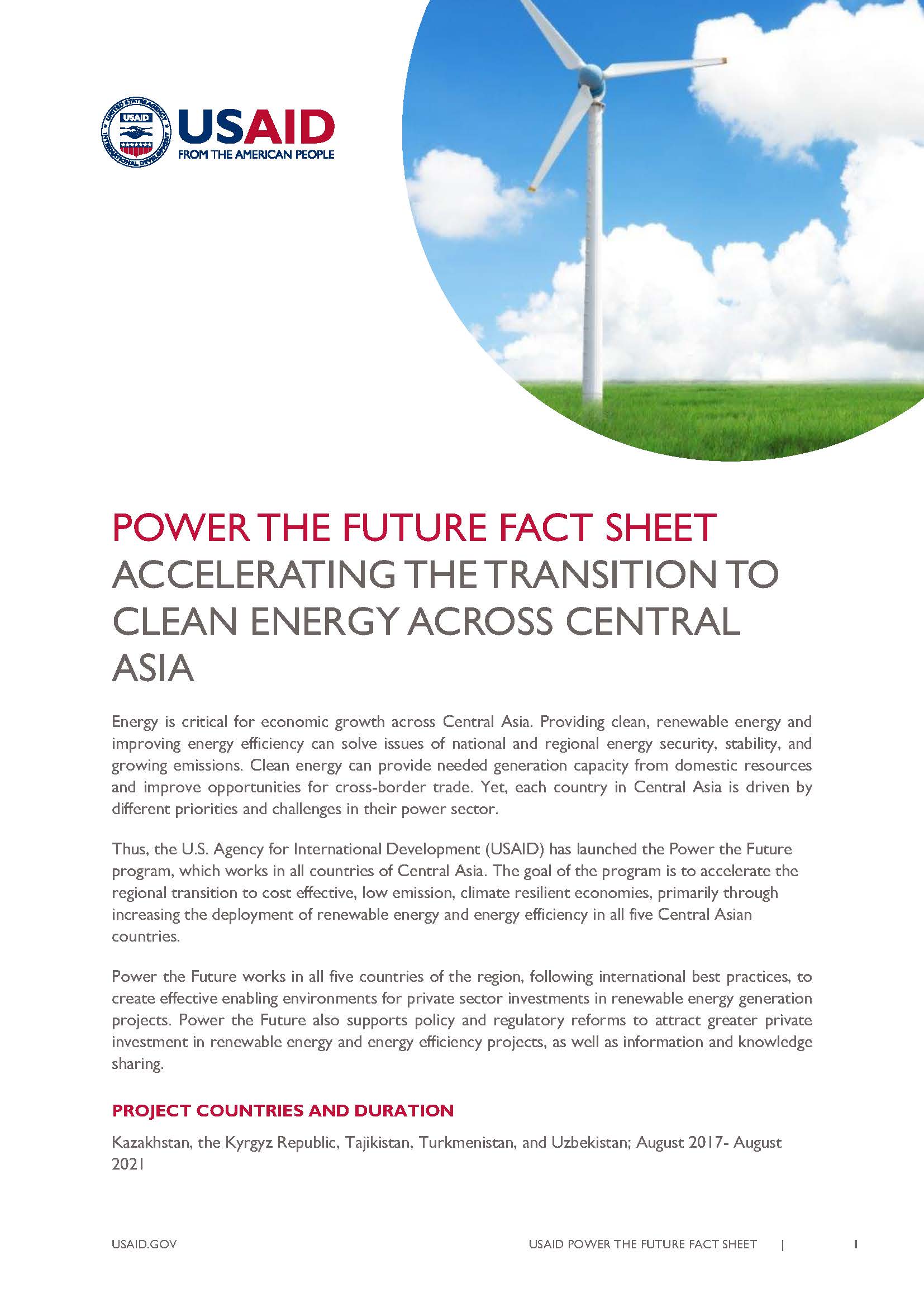Speeches Shim
Power the Future Fact Sheet ![]() (pdf - 168k)
(pdf - 168k)
Accelerating the Transition to Clean Energy Across Central Asia.
Energy is critical for economic growth across Central Asia. Providing clean, renewable energy and improving energy efficiency can solve issues of national and regional energy security, stability, and growing emissions. Clean energy can provide needed generation capacity from domestic resources and improve opportunities for cross-border trade. Yet, each country in Central Asia is driven by different priorities and challenges in their power sector.
Thus, the U.S. Agency for International Development (USAID) has launched the Power the Future program, which works in all countries of Central Asia. The goal of the program is to accelerate the regional transition to cost effective, low emission, climate resilient economies, primarily through increasing the deployment of renewable energy and energy efficiency in all five Central Asian countries.
Power the Future works in all five countries of the region, following international best practices, to create effective enabling environments for private sector investments in renewable energy generation projects. Power the Future also supports policy and regulatory reforms to attract greater private investment in renewable energy and energy efficiency projects, as well as information and knowledge sharing.
Project countries and duration
Kazakhstan, the Kyrgyz Republic, Tajikistan, Turkmenistan, and Uzbekistan; August 2017- August 2021
Areas of support
- Power Sector Reforms for increased private investments
- Power Sector Planning for Renewable Energy
- Grid Integration of Variable Renewable Energy
- Competitive Auctions for Renewable Energy Projects
- Improving Energy Efficiency in Generation Plants
- Knowledge Management, Coordination and Learning
Power the Future is a results-oriented program, focusing on bringing megawatts of clean energy online. Power the Future will work closely with national governments, donors and other key stakeholders to address the policy, technical and/or financial barriers.


Comment
Make a general inquiry or suggest an improvement.